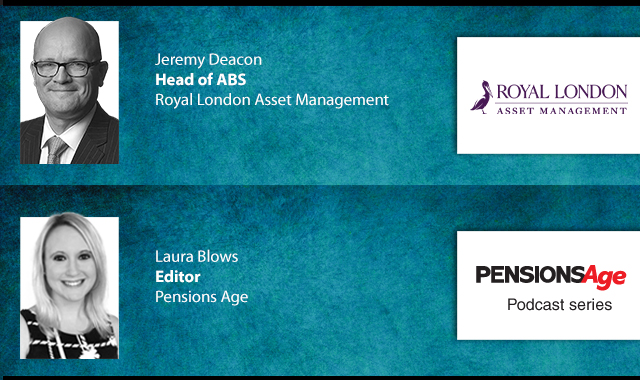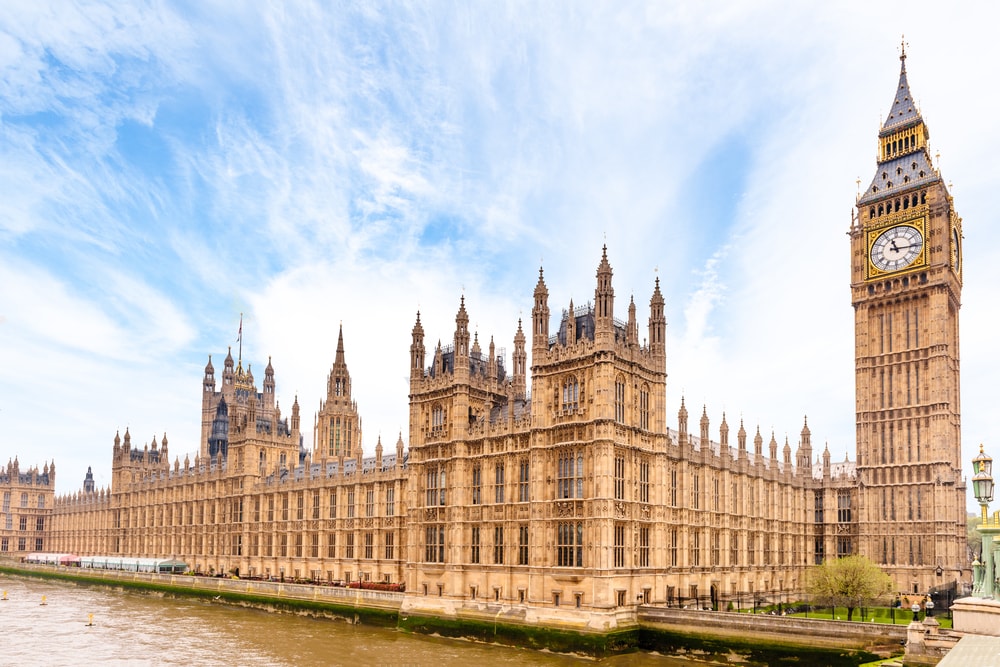As the economy recovers from the effects of the financial crisis, the Pension Protection Fund is stronger than ever and its systems have been fine-tuned. Matt Ritchie spoke to those behind the scenes at the lifeboat fund to find out how the PPF has developed
Pension Protection Fund chief operating officer David Heslop describes the lifeboat fund as an “evolving institution”. Speaking at the Pensions Age conference in September, Heslop used the analogy of a growing child and said the PPF is in its adolescence, and is set to become a “fine upstanding young adult” in the world of pensions.
Established by the Pensions Act 2004 and launched in April 2005, the PPF expects to be equivalent in size to one of the five largest pension funds in the country by the end of 2016. As at the end of June, the PPF was responsible for the benefits of almost 182,000 members from more than 597 schemes. Including schemes in assessment, the fund had assets of around £20 billion.
At the peak of the global financial crisis in March 2009 the PPF’s funding level stood at 88 per cent. It has tracked upwards since and reached 106.9 per cent at the end of March last year. PPF director of financial risk Martin Clarke says the funding level this year is expected to be around 109 or 110 per cent.
Assessment
As the scheme’s funding level has improved, so has the process it employs to wind schemes up and take on responsibility for paying benefits.
At launch the PPF aimed to process 75 per cent of schemes within two years of them being accepted for assessment. The actual average assessment period has been shortened from 36 months to 22 months since the fund launched, and head of scheme delivery Sue Rivas says that as of September the assessment period is now around 20 months.
“What we say here is that 24 months is for the most complicated schemes, so we would be looking to process the simplest schemes in a much shorter timeframe. In fact, in the last couple of months we’ve done two in eight months.”
The PPF set about making the assessment process more “efficient and effective” a few years ago, and after consultation with stakeholders implemented a series of measures aimed at streamlining the system.
A restructuring of the PPF team aimed to bring a sharper focus on “end to end responsibility” within the organisation, and saw a number of senior roles created. These introduced responsibility for tasks such as managing external relationships and troubleshooting.
The introduction of expert panels to handle key parts of the PPF’s work has delivered significant cost savings and efficiency gains. The panels comprise approved groups of specialist providers, and ensure those working on critical parts of the assessment process are fully aware of the PPF’s needs and modes of operation.
An actuarial valuation panel was the first to be established, and Rivas says the PPF has gained “dramatic results”, with hugely improved actuarial data and a halving of costs in the area. An administration panel followed last year, and most recently the PPF has launched a trustee panel.
“For me that’s probably the thing that’s going to shake up the market the most because we will only be working with four or so trustees as opposed to working with 10 to 15,” Rivas says. “We’ve already seen some significant cost reductions there. For example I know we had one trustee company that was charging £25,000 per month. Those days are gone.”
Head of restructuring and insolvency Malcolm Weir says the PPF’s re-structuring guidelines – which are available on their website - give it a “great deal of flexibility” in how it approaches the deals it strikes with schemes entering the fund.
Innovative solutions such as the one reached with UK Coal recently are arrived at on a case-by-case basis in collaboration with the regulator. Schemes such as Kodak are also increasingly able to find solutions outside the PPF, as funding has improved and investment markets have strengthened.
“It’s just the fact that there are more opportunities now where the assets can be used on a solution that gives a better pension to the pensioners of the scheme than coming into the PPF, which is great news for them,” Weir says.
Investment
Investing within a “fairly constrained” risk budget, the fund aims to beat liabilities by 1.8 per cent per annum. Clarke says the PPF has been meeting this objective.
“Last year we more than doubled our target, we improved by more like 5 per cent on our liabilities,” he says. “On an absolute basis last year we did 11 per cent, because the value of liabilities grew due to bond rates falling. The year before we did 25 per cent.”
A focus on managing the value of liabilities is a key plank in the PPF’s investment strategy. The fund completely hedges out interest rate and inflation risk with a combination of instruments including physical matching assets, swaps, and swaptions.
For the portfolio not dedicated to supporting the hedging strategy, the PPF uses a widely diversified range of assets to gain outperformance while remaining within the low risk budget.
Allocations to bonds, equities, macro and credit strategies, and global tactical investment plays sit alongside a highly diversified range of alternative assets to provide the PPF with an appropriate risk-adjusted return on the portfolio.
Clarke says the combination of a widely diversified portfolio and a focus on protecting against movements in liabilities have served the fund well in its efforts to navigate through very challenging market conditions.
“By closely tracking our liabilities we’ve managed to keep the fund in very, very good shape, and our outperformance against our liabilities has been ahead of target,” Clarke says. “There’s a lot to be proud of in terms of the fact we’re in good financial shape, but equally there’s a lot of uncertainty that still lies ahead.”
The fund has precautions to protect against a sharp increase in rates, but Clarke says a “galloping” economic recovery and a rapid rise in rates could prove damaging for the fund. However, the Bank of England’s new forward guidance policy offers extra certainty in this area, as another “triangulation point” in addition to the market’s view on where and when rates will move.
The fund may also have to adjust its strategy in response to regulatory pressures. Regulations covering over-the-counter-derivatives including central clearing requirements could increase the costs of using the instruments to hedge out liabilities.
“We don’t yet know what the impact is but we think we ought to position the fund to be less dependent on unfunded hedging strategies,” Clarke says.
The impact of regulations on derivative pricing has contributed to the fund looking more closely at illiquid assets with hedging properties, such as infrastructure.
The drive for banks to take some assets off their balance sheets is also creating opportunities, and the PPF is looking at the benefits of alternative credit and secondary private equity strategies as a result.
Levy
Investment returns are one of three key income streams for the PPF, alongside asset recoveries from insolvent companies and the levy on scheme sponsors.
Particularly early in its existence, the PPF faced criticism that the levy would be a crippling burden on already under-pressure sponsors, or that the levy was insufficient to provide the capital required to cover the volume of liabilities the fund is effectively insuring.
The fears have so far proved unfounded, and the fund is working towards a future where the levy will not be necessary. It aims for self-sufficiency by 2030, and is currently 84 per cent confident of meeting this goal.
In the meantime, it levies individual sponsors at a level set to reflect both the risk in the wider system and the risks each sponsor faces based on their balance sheet, funding position, and investment strategy.
“If you’re a well-funded scheme with a strong sponsor and have a well matched portfolio you’ll pay a very small levy. If you’re not you’ll pay a slightly higher share of the levy because we think that’s where the risk is,” Clarke says.
The PPF recently announced the levy estimate for next year would represent a 10 per cent increase, to £695 million. This is despite the average funding position of eligible schemes having improved by more than 12 per cent over the past 12 months.
The increase is attributed to the levy formula’s mechanism of smoothing movements in bond yields. Although yields have improved over the past year, they are still lower than the position five years ago.
“The smoothing has helped ease the pain while rates were falling, but equally smoothing is acting as a bit of a brake on the levy reducing as rates begin to rise again,” Clarke says.
The future
Rivas says the PPF will not be resting on its laurels, and continues to look to fine tune its systems.
“However, we have to recognise that if we continually change the process people don’t know where they are, and we do need to make sure that our processes are given a chance to bed in. I think probably naturally from that our panellists will then start thinking of other ideas of how they can streamline it a bit more.”
An auditors panel is expected to launch in the next couple of months, and an expert legal panel is expected to be introduced early next year.
The PPF has a sharp focus on data quality. Rivas says this is another area that could benefit from the expert panel approach in future but there are no firm plans for this as yet.
The fund will also be looking closely at so-called pre-pack deals, whereby companies carry out an insolvency process which allows them to continue trading in another form but divest pension liabilities to the PPF.
Weir has been with the PPF for around four months, and says the area of pre-packs is something he has identified as requiring attention.
“I think they are a useful tool but they’ve got to be done in an open and transparent manner – there is sometimes some criticism that that isn’t done,” Weir says. “There are quite a few that go through where you have to ask: ‘were we properly consulted, and has that actually been the best outcome?’ Not just for the PPF but for all creditors. We just happen to be the largest one more often than not.”
Next year the fund will start providing in-house services to members alongside administration and payroll provider Civica, and up to 100 new roles will be created to provide for the new approach. The PPF is also working with its new risk information provider Experian to develop a bespoke model for calculating the insolvency risk scores that factor into its levy calculations.
On the investment side, Clarke says the fund’s continued growth will offer opportunities, but will also require ongoing management. A recent example was the PPF’s appointment of Legal & General Investment Management as LDI manager alongside Insight. Clarke says it was a complex but successful move, aiming to limit the risk concentrated with any one manager.
Overall, Clarke says many of the objections to the PPF’s existence and strategy have now largely been “sidelined”. There will still be critics, he says, but the PPF’s track record has resulted in there being much more “goodwill in the bank” than nine years ago.
“Certainly we’ve been able to navigate through what would’ve appeared to have been a very difficult period. We have taken on board some very large deficits and some pretty large schemes over that period,” Clarke says.
“We’ve been pretty smart with the way we’ve priced our risk, we’ve pitched our levy at the right level. We’ve been very cautious - and justifiably so - with the way we’ve approached our investment strategy. But I think the third part of it is luck – if the government hadn’t bailed out the banks I think we’d have been in different shape altogether. You can never discount all the things that you can’t control, because it can quite easily come and bite you.”
Written by Matt Ritchie
Latest News
-
Rumours of new DB superfund market entrants grow
-
Report condemns ‘successive government failures’ in civil service pension administration
-
Pre-Budget speculation continues to spark concerns
-
PMI warns ‘fragmented’ UK savings system at ‘tipping point’
-
Life expectancy not the only factor to consider, experts tell SPA reviewer
-
National Pension Tracing Day 2025: Industry efforts ramp up
Private markets – a growing presence within UK DC
Laura Blows discusses the role of private market investment within DC schemes with Aviva Director of Investments, Maiyuresh Rajah
The DB pension landscape
Pensions Age speaks to BlackRock managing director and head of its DB relationship management team, Andrew Reid, about the DB pensions landscape
Podcast: Who matters most in pensions?

In the latest Pensions Age podcast, Francesca Fabrizi speaks to Capita Pension Solutions global practice leader & chief revenue officer, Stuart Heatley, about who matters most in pensions and how to best meet their needs
Podcast: A look at asset-backed securities

Royal London Asset Management head of ABS, Jeremy Deacon, chats about asset-backed securities (ABS) in our latest Pensions Age podcast
© 2019 Perspective Publishing Privacy & Cookies










Recent Stories